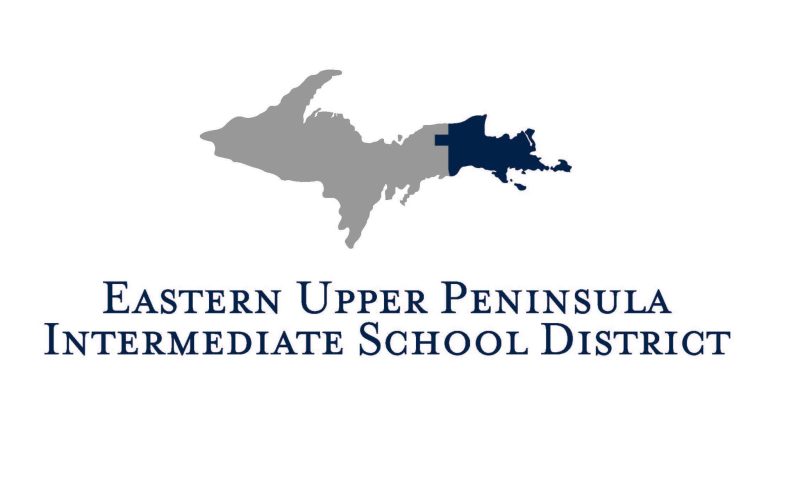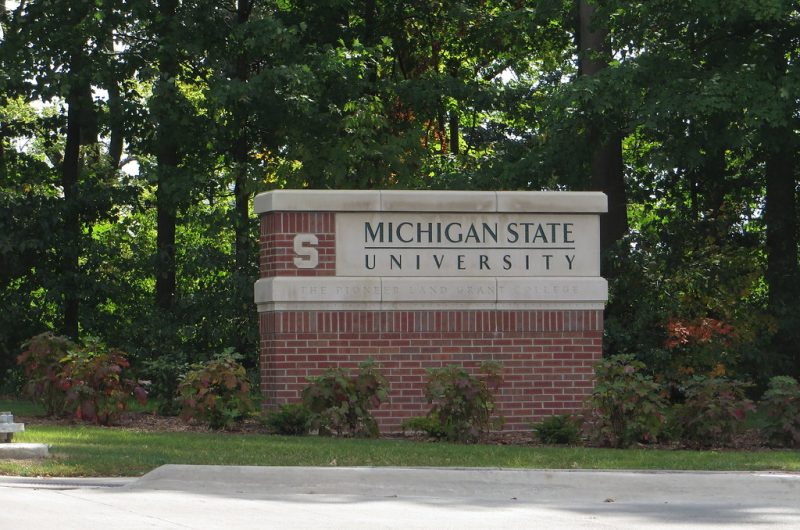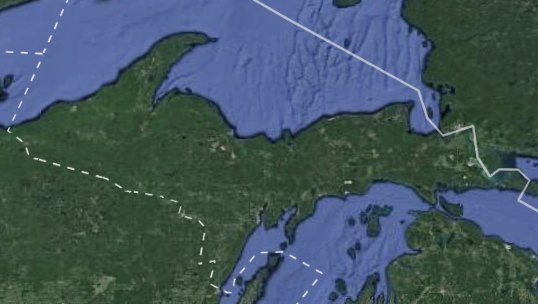Eastern U.P. School District Maintains Educational Excellence Amidst COVID-19 Pandemic

In January 2020, I left a very small, rural, Kindergarten-12th grade district of 275 students where I served as the superintendent/K12 Principal, to become the superintendent of the Eastern Upper Peninsula Intermediate School District (EUPISD) in Sault Ste. Marie, MI.
The EUPISD is the largest geographic intermediate school district in the state, encompassing 4,000 square miles in Chippewa, Mackinac, and Luce Counties. We support the education of 6,400 students in 19 districts–three of which are located on islands.
The districts range in size from five students to 2,000 students. The EUPISD staff provides services and supports in special education, technology, career and technical education, early childhood education, business services, as well as curriculum, instruction, and assessment.
Our region has a reputation of working collaboratively with each other. When COVID-19 first impacted our state, this collaborative nature served us well.
Almost overnight, our teachers had to switch to remote instruction. Our staff offered continual support for teachers in online instructional best practices. Districts scrambled to deliver computers or paper packets to their students, as well as to deliver meals or food boxes.
Magnifying the issue of remote instruction was the fact that 30-35% of our students and staff had limited to no connection to the internet. The lack of reliable and affordable internet was a huge barrier to the teaching and learning.
Our technology consortium responded by deploying 100 community access points to common areas: libraries, township halls, churches, and other “drive-up” locations. Hundreds of Chromebooks were ordered and distributed to students to support remote learning.
Our district leaders came together to find solutions to exceptionally challenging times. Area administrators continue to meet weekly with health department representatives. Except for times of mandated closures, most districts in the Eastern Upper Peninsula (EUP) were able to remain in face-to-face instruction.
For students who chose not to attend in-person instruction, several of our districts worked together to form the “EUP Virtual.” The EUPISD hired teachers to support remote learners. This allowed districts to retain underemployed teachers in very uncertain times, and pool resources to meet a specific need of our students and their families. Students could remain in their resident district.
I have been continually impressed by the creativity and fortitude shown by our teachers, support personnel and administrators. The instructional strategies practiced by our teachers over the last year have been impactful on student achievement based on the region’s mid-year data.
Administrators and their staff work diligently to maintain a safe environment for their students, with enhanced screening and cleaning protocols, the cohorting of students, contact tracing of any positive cases, and now testing of athletes. Students and their parents have done their best in very trying times.
The 2020-2021 school year is in the home stretch. There are several educational issues that our region, and the state will be facing in the next year: social emotional learning, talent shortages, connectivity, and student opportunity.
The social and emotional needs of our students will impact the education arena for years to come.
We cannot simply “catch” our students up; they were not missing school for a two-week vacation. The COVID-19 pandemic impacted our learners, our staff, and our communities. Families faced losses and insecurities. We need to recognize this as unfinished learning and alter the expectation of what will be accomplished in subsequent years.
Our youngest learners have been without their “normal” environments for so long. These students learn through play and socialization. Early childhood staff are seeing students exhibiting social behaviors in March that one would normally see in the early fall.
Teachers will need to be prepared to adapt teaching and learning plans to teach behavior expectations much longer than normal. All our students have experienced the trauma of the pandemic. But not everyone had a safe and secure home to spend the lockdown in, so some students experienced a greater level of trauma.
The EUP region is vastly underserved in mental health services. We need to continue to address this issue through legislation and funding, such as 31N and other support for mental health.
While our staff have been incredibly dedicated throughout this last year, they are weary. Many teachers, support staff and administrators across the state have opted to retire. Districts are facing teacher shortages, as well as shortages in bus drivers and other positions.
There are local superintendents who drive the bus every day. Some superintendents and principals are covering recess and lunch duty to give their staff a much-needed break. All our districts are struggling to find substitute teachers. We need to continue to work as a nation to recognize that teaching is a valued profession and entice talented individuals to come into the profession.
Connectivity is an issue that we can and will resolve. While COVID-19 elevated the lack of connectivity to a national discussion, there are recent developments that are exciting. Connectivity is not only an educational issue, but also an economic issue.
Access to reliable and affordable internet is a prerequisite for sustainable economic growth in the Eastern Upper Peninsula. Delivering healthcare and education services effectively requires high speed internet. Banks, businesses, entrepreneurs, and local units of government require consistent, secure access to high-speed internet to reach customers.
There are exciting new opportunities in expansion and upgrades of services. Recent investments by our private sector partners in our communities has improved service. The Rural Digital Opportunity Fund (RDOF) is injecting $37 million into the EUP. Local communities and schools are receiving an influx of stimulus relief.
The key at this point is coming together collaboratively and garnering more impact as a region.
As an educator in a rural setting, my guiding purpose has always been to increase opportunities for learning to my students. At the EUPISD, this continues. The challenge lies in educating our students and then retaining that talent in our region. Our ISD has a regional career and technical education (CTE) millage that promotes at least two CTE programs for every junior and senior to access in their district.
Some examples of our courses are Natural Resources, Accounting, Woodworking, Health Sciences, Welding, and Mechatronics. These courses build the foundation for students to continue into certification courses or college. We need to build our skilled workforce to provide our employers with workers.
As we maneuver our way through the end of the pandemic, let’s take this as an opportunity for education to be more than what it was before COVID struck. Our educators have learned countless lessons as they transitioned to remote instructors. I am hopeful that educators will use the experiences over the last year to make our schools’ “new normal” a better normal.
With a continued focus on student wellbeing, support of our staff, and garnering resources for our schools (including appropriate funding at the state level), our schools will meet the needs of all their students and offer a robust, student-centered education.






Thank you, Angie, for your years of service and dedication to Engadine Consolidated Schools. You have first-hand knowledge and experience in working to serve the needs of students in small, rural settings. Although I hated to see you leave our district, I was happy to have you to lead our ISD.
As you are well aware, our small, rural area surrounding the Engadine school district is in dire need of faster, reliable, and affordable internet. I was on the TAS technology committee for several years before I retired. Palm readers, laptops, and then tablets were distributed to students, all purchased with State and Federal monies. My argument then is the same as my argument now—“The cart before the horse!” I have argued for years that Government money for increased internet access should be distributed to providers to extend their internet service to rural areas like ours.
I have contacted NMU on several occasions, asking them to consider a tower in the Gould City area, specifically in the Corrine/US2/H33 area. They stated at the Engadine school board meeting (which I attended) that their tower would service a 9-mile radius, and they were considering another tower near Blaney Park. Well, as you and I know very well, there are many obstacles such as trees, trees, and more trees! A 9-mile radius is ludicrous! I tried it. We even had an existing 25’ tower. No service… A NMU tech told me we would need at least a 65’ tower.
I have pleaded with Astrea (formally Lighthouse) for the past two years to extend their broadband internet from just South of Curtis on H33, to US 2. Many of my neighbors have also contacted them. A neighbor called me a couple weeks ago. She had recently talked to Astrea and they have no intention at this time of extending their service. Too few homes, and not cost effective…
I recently signed up for Starlink, through Space X. It will cost $99/monthly and there is a $499 + tax and shipping. BUT it will be much, much faster, and no data caps. Our current provider, (Viasat satellite through Astrea,) costs $84/month for 40 gbs, and is often working at dial-up speeds!
But—how many families can afford a service like Starlink? How many can install it themselves? Manistique, Newberry, Curtis, and Engadine school buses pass by our house daily. So I know there are many families nearby in need of reliable, affordable internet. I talked to a couple school kids in our area who had been given hotspots to use this past year. Although it helped a bit, their internet was slow, and they had limited access.
I just read that the EUP has received $37 million to increase internet connectivity in the EUP. I pray and hope that includes families in areas like ours.